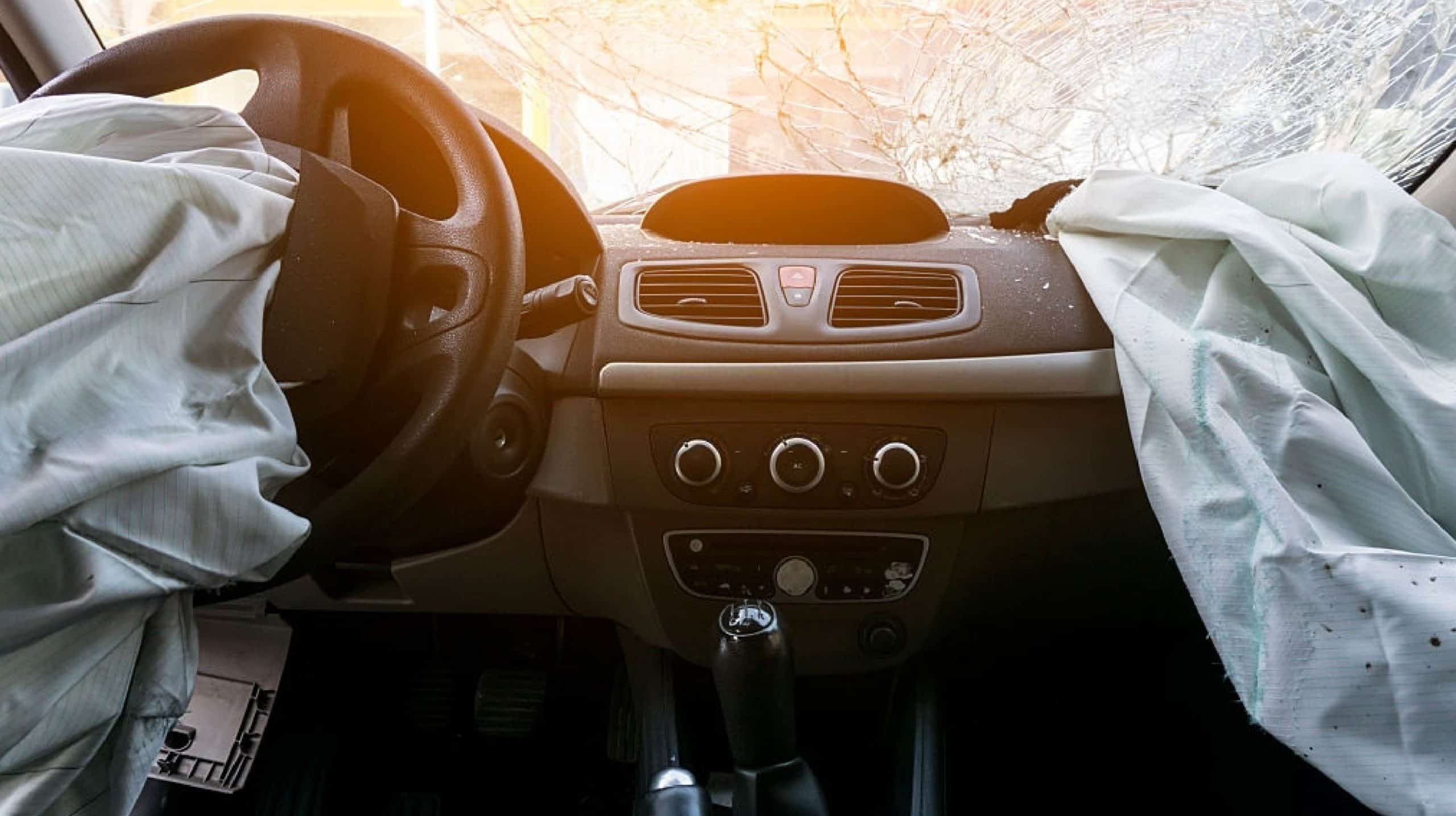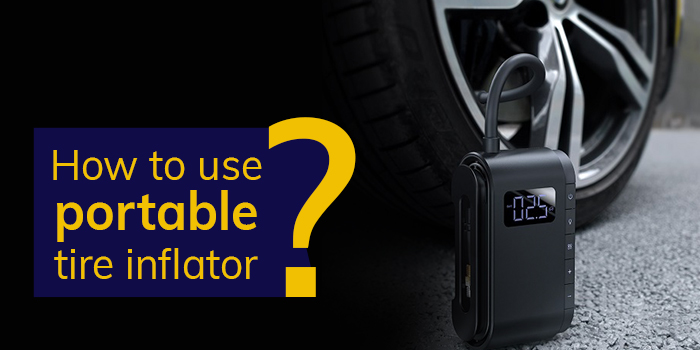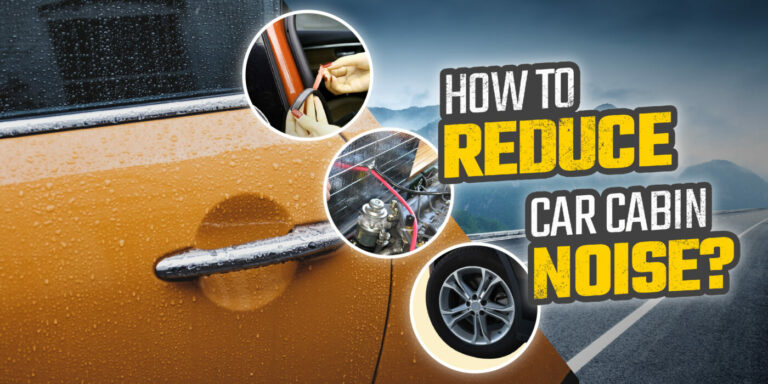
Have you ever read of a car accident in a newspaper? The images of the car accident shake us in and out, thinking of an accident. With the number of car accidents happening every day, the harsh reality is that there is a possibility that you might come across one. You cannot foresee an accident, but you can surely save yourself from the level of injuries that come with an accident.
Such impacts can be fatal and can cause a lot of injuries if you are not cushioned. It is where airbags come in handy and save you from those severe impacts. We have covered everything related to airbags in our detailed blog to help you understand the significance of this life-saving tool.
What is Airbag?
An airbag is a vehicle-resistant system that uses a bag to inflate exceptionally fast, then quickly deflate during an accident. It consists of a nylon cushion, a flexible fabric bag, an inflation module, and an impact sensor.
The airbag’s system provides a soft cushion and restraint to the vehicle occupants during a collision. It reduces the impact of the injuries by acting as a cushion between the vehicle’s interior and the vehicle occupants.
Types of Airbag Systems
Modern vehicles come up with 10-12 airbag systems in various configurations. It consists of energy-absorbing surfaces between the vehicle occupants and the vehicle interior like steering wheels, windshield, instrument panel, headliner, and vehicle body. It includes modules for the driver, passenger, side-curtain, seat-mounted, door-mounted. Along with this, the B and C-pillar mounted side-impact knee bolster, inflatable seat belts, and pedestrian modules are commonly seen in vehicles nowadays.
What is Airbag Sensor?
The airbag sensor is a detecting device that records rapid deacceleration and produces a signal in response. Its primary function is to communicate the information with the ECU(electronic control unit) and all the devices related to the airbag system.
You might be wondering what the Airbag sensor’s location is? Generally, it is located at the impact zones of the vehicles. Mostly in front of most cars behind the bumper. Let us now understand how airbag sensors work.
Whenever an accident occurs, the sensors pass a signal to the control unit to deploy instantaneously. The control unit analyzes the data and arranges safety features like seat belt lock, automatic door locks, and airbag deployment.
What is Airbag Deployment?
Airbag sensors automatically control airbag deployment. As soon as your car faces a crash, the sensors detect the impact and severity of a collision. The sensor then sends a signal to the ECU.
The control unit determines that the airbag should be deployed; the system initiates an inflator unit that heats chemicals rapidly to produce large volumes of inert gas to expand the bag. They deploy in violent collisions and moderate and even minor collisions.
The minimum speed for airbag deployment is 10-12mph. Most of the airbag deployment speed is 16mph. Airbag deployment systems may also lead to unwanted injuries to the vehicle occupants at such high speed. Injuries associated with them include abdominal injury, renal trauma, and head injuries.
How Do Airbags Work?
During an accident, the Car decelerates very quickly. The occupants inside the vehicle continue to move until they trash on something, usually the vehicle’s interior like a dashboard or steering wheel.
In the event of an accident, accelerometers detect sudden rates of deceleration which suggest an impact has occurred. There are large nylon bags folded neatly into the interior of the car until they are needed.
These systems are connected to a small sensor device that ignites an abrupt release of nitrogen gas. This nitrogen gas fills the airbags very fast and inflates it. It creates a cushion for the vehicle’s occupants and reduces the accident’s impact on the Car’s passenger and the driver.
Advantages of an Airbag
Some of the essential advantages are listed below:
- Increases cushioning around the passenger’s neck, head, and spine
- Decreases the amount of force impacting a passengers head by limiting the distance it hits on the interior of the vehicle
- Reduces the risk that an occupant will face through the window
- Reduces the risk of passengers being ejected out of the car
Disadvantages of an Airbags
Airbags do not fully guarantee to prevent fatalities. Their deployment under certain conditions may also cause some serious harm.
- When the sensor detects a collision, it sends an electric signal to the control unit that explodes and releases the nitrogen to fill the bag. Still, in some instances, this nitrogen explosion may also lead to severe burns in passengers
- The talcum powder filled may cause breathing issues in some passengers.
- Their deployment can reach very high speeds. If your body parts are too close to the steering wheel, you may experience severe fractures or severe internal injuries.
What is Airbag Suspension?
A vehicle tends to sag due to excess weight from the load you are towing. It creates problems that could result in a wreck. According to experts, pulling too much load can result in steering and braking, and acceleration problems.
The airbag suspension system works like a balloon, it withstands the vehicle’s weight and pumps air to prevent the truck from bending. It also lets the air blow out when you are not towing the vehicle.
How to Check the Airbag System?
The airbag system needs to be in shape to avoid any unnecessary accidents. If the system is working perfectly fine or not, one way you know is to look at the Passenger Airbag Off light. If there is no one in the seat, the light should illuminate. If someone is seated, the light should turn off, implying that the system works perfectly fine.
Frequently Asked Questions
Q1: How much are airbags for cars suspension?
Ans: Airbags are well designed and need satisfactory quality to keep you safe; they are affordable. Depending on your need, you can pay anywhere from INR 24500 to INR 54000 for them.
Q2: How much does it cost to fix the airbag sensor?
Ans. The cost of sensor replacement is between INR 28000 to INR 33000. The sensor parts cost approximately $375. The rest of the charges are labor charges. The cost also varies depending on the type of manufacturer, location, type of vehicle, etc.
Q3: How do I know if my airbag sensor is bad?
Ans. You can check the warning light on the dashboard. If it is illuminating every time you start the vehicle, then it is okay. But, if the warning light remains illumined after starting the Car, this indicates a sensor issue.
Q4: What causes airbags to deploy
Ans. Airbags come with sensors that detect when a collision occurs. When the sensors detect a crash, they send an electronic signal to the Controller unit that triggers their deployment; front, back, and side deployment.
Q 5: Do airbags deploy in a rear-end collision?
Ans. Most airbags protect the passengers during front-end collisions and hence do not operate during rear-end accidents. Although, if the impact of the accident is too high, the front-end module may also trigger and lead to their deployment in rear-end collision.
Q 6: How often should airbags be replaced?
Ans. In general, airbags do not require replacement no matter how long you own the vehicle. Earlier, most manufacturers used to label the cars, insisting they be replaced after 10-15 years, depending on their condition. But nowadays you do not require to replace them.
Q 7: What makes airbags explode?
Ans. In the event of a collision, sensors in cars send an electric signal to an ignitor. The Airbags consist of a chemical named sodium azide, or NaN3. It generates heat and causes sodium azide to decompose into sodium metal and nitrogen gas, this inflates them, and hence they explode.
Q 8: When did airbags become standard?
Ans. According to the latest amendment of the Central Motor Vehicle Rules, 1989, they have become standard from July 2019 in India.
Q 9: How much do airbags weigh?
Ans. Typically the weight of the airbag depends upon the nitrogen gas present to inflate them. It also depends on the size of the seat for which it is deployed at. A driver-side module is weighted approximately 50–80 g, i.e., it contains 50 to 80 grams of NaN3. However, in some instances, the passenger-side module contains about 250 grams of NaN3.
Q 10: What are airbags made of?
Ans. Airbags are made of nylon. Either nitrogen or argon gas is used as an inflator for them. Both nitrogen and argon gases are nonhazardous. After their deployment, the smoke-like residue makes its way into the air. This residue is due to talcum powder used as a lubricant to assist their deployment. A small amount of sodium hydroxide is also present, which acts as an irritant. It is advisable to wash off the hands after their deployment.
Q 11: What harm can Airbag cause?
Ans. An airbag applies a lot of force that can damage your head, nose, jaws, and eyes. The talcum powder filled in them may cause breathing issues in some passengers. Their deployment can reach very high speeds. If your body parts are too close to the steering wheel, you may experience severe fractures or severe internal injuries. Permanent fractures, broken bones can also be the result of their deployment. In some cases, passengers also face eye injuries which may lead to permanent blindness.
Q 12: How do seatbelts and airbags work together?
Ans. During a collision, when the Airbag deploys, the seat belt holds the occupant and prevents the ejection of the occupant from the vehicle. It then creates a cushion between the passenger and the Car’s interior, such as the steering wheel, dashboard, windshield, or other surfaces. According to experts, Seat belts and work in tandem with them and help prevent the passengers from fatal injuries and reduce the impact on the head, nose, spine, back, and other body parts.
Q 13: How do airbag sensors work?
Ans. Whenever an accident occurs, the sensors pass a signal to the control unit to instantly deploy the Airbag. The control unit analyzes the data and arranges safety features like seat belt lock, automatic door locks, and the deployment of the airbags. These sensors are located in the front of the Car. Mostly in front of most cars behind the bumper.
Q 14: Are 2 airbags enough in a car?
Ans. The number of airbags in a car is not standard, a vehicle can have any number of airbags, and it usually depends on the manufacturer. However, you are likely to get injured in a car with two airbags than a car with six. Modern vehicles come with many airbags like modules for the driver, passenger, side-curtain, seat-mounted, door-mounted. Along with this, the B and C-pillar mounted side-impact knee bolster, inflatable seat belts, and pedestrian modules are commonly seen in vehicles.
Q 15: How to disable the airbag system?
Ans. To disable the airbag system, you need to turn off the Power, Take Out the Fuse, Take Away the Dashboard Cover, prevent the movement of the Airbag system, Remove the lower panel of the steering wheel, and then finally disable the system.
The Final Word
Getting a car or a vehicle is often considered a stepping stone in a person’s life. But, it is equally important to understand and implement the safety features associated with a car. Airbags are considered an integral part of the car, and there is no escaping. Hopefully, our guide above might have helped you understand their importance.
So the next time you go out to buy a car, look out for a moving beauty with the maximum number of airbags which would ensure maximum safety to you and your fellow passengers. Remember the more they are, the safer you and your fellow travelers would feel.








